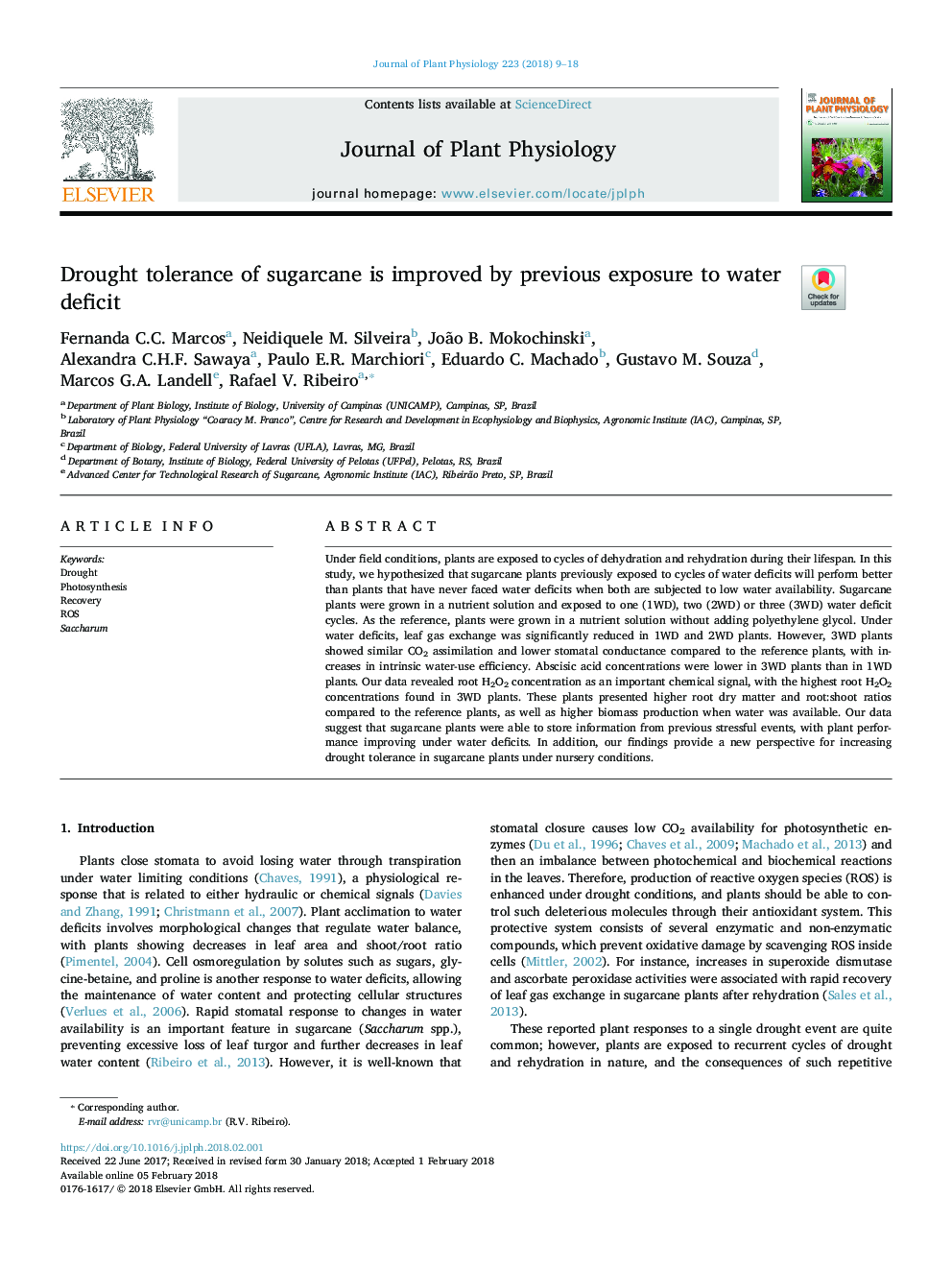| Article ID | Journal | Published Year | Pages | File Type |
|---|---|---|---|---|
| 8386871 | Journal of Plant Physiology | 2018 | 10 Pages |
Abstract
Under field conditions, plants are exposed to cycles of dehydration and rehydration during their lifespan. In this study, we hypothesized that sugarcane plants previously exposed to cycles of water deficits will perform better than plants that have never faced water deficits when both are subjected to low water availability. Sugarcane plants were grown in a nutrient solution and exposed to one (1WD), two (2WD) or three (3WD) water deficit cycles. As the reference, plants were grown in a nutrient solution without adding polyethylene glycol. Under water deficits, leaf gas exchange was significantly reduced in 1WD and 2WD plants. However, 3WD plants showed similar CO2 assimilation and lower stomatal conductance compared to the reference plants, with increases in intrinsic water-use efficiency. Abscisic acid concentrations were lower in 3WD plants than in 1WD plants. Our data revealed root H2O2 concentration as an important chemical signal, with the highest root H2O2 concentrations found in 3WD plants. These plants presented higher root dry matter and root:shoot ratios compared to the reference plants, as well as higher biomass production when water was available. Our data suggest that sugarcane plants were able to store information from previous stressful events, with plant performance improving under water deficits. In addition, our findings provide a new perspective for increasing drought tolerance in sugarcane plants under nursery conditions.
Related Topics
Life Sciences
Agricultural and Biological Sciences
Agronomy and Crop Science
Authors
Fernanda C.C. Marcos, Neidiquele M. Silveira, João B. Mokochinski, Alexandra C.H.F. Sawaya, Paulo E.R. Marchiori, Eduardo C. Machado, Gustavo M. Souza, Marcos G.A. Landell, Rafael V. Ribeiro,
